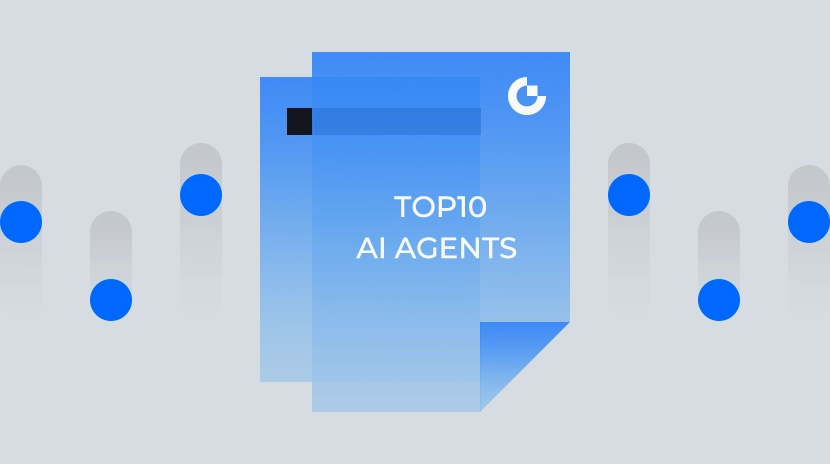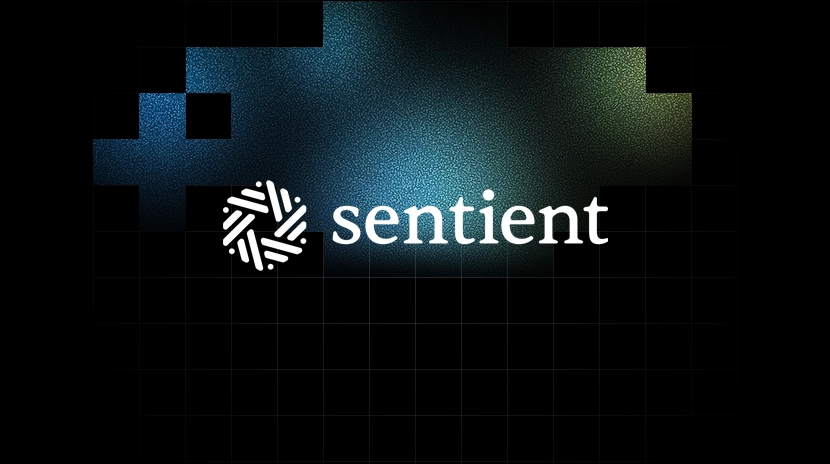PIN AI 如何革新数据隐私和个性化 AI

在当今数字世界中,个人数据分散在各大科技巨头的平台上,用户难以掌控自己的数据。目前的 AI 应用,如 ChatGPT 和 Google Gemini,由于采用集中式数据存储,既无法提供真正个性化的服务,又引发了隐私问题,阻碍了定制化体验的实现。
PIN AI 通过提供去中心化的本地个人智能系统、安全边缘计算和可信执行环境(TEE)来解决这些挑战。这一方法确保个人数据始终保持私密,同时支持 AI 代理与用户需求无缝匹配。借助这些技术,PIN AI 赋能用户掌控自己的数据,充分释放 AI 的潜力。
什么是 PIN AI?
Personal Intelligence Network AI(PIN AI)是一个面向个人 AI 的开放平台,使用户能够掌控自己的数据,并训练和部署符合个人需求的 AI 模型。PIN AI 结合了本地计算、可信执行环境(TEE)安全性和区块链验证,实现人与 AI 代理的无缝交互,所有交互均由个人 AI 驱动。该平台将用户连接至一个专业 AI 代理的市场,这些代理可执行预约安排、数据分析、财务管理等任务,同时确保隐私安全。
主要特点与优势
- 去中心化本地智能:AI 模型直接在用户设备上训练和部署,保障隐私和安全。
- 安全边缘计算:本地数据处理减少数据泄露风险,确保敏感信息不会离开用户设备。
- 可信执行环境(TEE):TEE 在设备内提供隔离的安全计算环境,保护数据和 AI 交互免受外部威胁。
- 数据所有权:用户对个人数据拥有完全控制权,可自行管理、共享和变现。
- 代理经济:一个专注于不同任务的 AI 代理市场,包括预约安排、数据分析和财务管理等。
PIN AI 运营领域
个人 AI
PIN AI 以个人 AI 为核心,使用户能够拥有专为其需求和偏好定制的 AI 模型。与传统依赖中心化服务器运行的 AI 系统不同,个人 AI 模型直接在用户设备上训练和部署。这确保了 AI 在私密且安全的环境中提供个性化辅助。
数据所有权
数据所有权是 PIN AI 的核心原则之一。在当前的数字环境中,用户的个人数据通常由大型科技公司掌控,限制了他们管理和利用自身数据的能力。PIN AI 通过赋予用户对自身数据的完全控制权来解决这一问题。用户可以决定共享哪些数据、与谁共享以及在何种条件下共享。这不仅使用户能够在保障隐私和安全的同时变现数据,还增强了个人数据的自主权。
代理经济
PIN AI 引入了代理经济(Agent Economy)的概念,允许专业 AI 代理为用户执行各种任务。这些 AI 代理可以预约安排、数据分析、财务管理以及简化日常数字任务。代理经济是一个市场,用户可以根据自身需求访问和部署不同的 AI 代理。
PIN AI 架构
PIN Onchain 协议
PIN Onchain 协议通过一系列智能合约利用区块链技术,确保数据处理和 AI 代理交互的完整性与安全性,实现链上验证与校验流程。协议的核心包括:
可验证计算框架:可验证计算框架负责确保链下计算的准确性和可靠性。它通过验证可信执行环境(TEE)认证报告,并监控去中心化服务(包括 God Models、数据连接器和本地大语言模型 LLMs)的活动来实现这一目标。该框架确保所有计算和交互透明且防篡改。
代理注册表:代理注册表是 PIN AI 网络中 AI 代理和数据服务的去中心化注册系统。它维护 AI 代理的完整列表,并附带信誉评分和质押机制。用户可根据 AI 代理的表现和可靠性发现并部署合适的 AI 代理,从而在生态内建立信任与责任体系。
PIN 链上验证
PIN Onchain 协议支持对 TEE 认证报告的链上验证,确保仅执行经过验证的安全计算。验证流程涉及检查节点及其执行计算的完整性。此外,协议还会验证 AI 代理执行任务后生成的 zk 证明,进一步增强 AI 交互的安全性和透明度。为保证网络内的节点稳定、高效且保持互联,PIN Onchain 协议包含监测工作节点活动的机制,从而维持整个网络的健康运行,确保用户获得可靠且高效的 AI 服务。
个人 AI (Personal AI)协议

数据连接器
数据连接器是软件组件,在可信执行环境(TEE)内安全地获取、处理和构建个人数据。它们允许用户从主要的 Web2 和 Web3 平台(如 Google、Apple、Meta、Amazon、MetaMask 和 Phantom)连接并检索信息,同时确保数据隐私和用户控制。数据连接器将数据处理并结构化为个人知识图谱,使其可供 Personal AI 访问并优化使用。
数据连接器的工作原理
数据连接器在用户授权后,通过 API 安全访问用户数据,并将其处理为个性化知识图谱。然后,它向 PIN Onchain 协议提交基于硬件的认证报告,以验证可信执行环境(TEE)节点的安全处理能力。经过验证的数据将根据用户偏好(本地设备、云端或专用存储)安全存储,以保护隐私并支持 AI 直接访问。
本地 LLM(Personal AI)
本地大语言模型(LLMs)直接在用户设备(如智能手机、笔记本电脑或私有云)上运行,确保敏感数据始终由用户掌控,通过本地化处理保障隐私。核心特性包括:基于用户交互、历史和偏好持续更新的“个人索引”进行上下文个性化,以提供高度定制的 AI 反馈;采用混合架构,在用户允许的情况下结合本地计算与云端资源;使用可信硬件隔离(TEE)进行安全数据处理,防止未经授权访问;具备迭代学习能力,使模型随着用户需求的变化不断优化。
本地 LLM 的工作原理
模型以压缩形式存储在 SSD/HDD 或私有云上,并通过 PIN AI 应用访问。AI 计算直接在设备 CPU 或 GPU 上执行,确保敏感操作留在本地,从而保障安全和隐私。混合架构允许用户在需要时启用云端资源,以处理复杂任务,同时保持对数据的控制,实现无缝扩展。本地个性化通过离线学习和模型更新实现,使 AI 在不影响数据隐私的情况下,持续适应用户行为和需求。
数据守护模型(God Models)
数据守护(God)模型是运行在 PIN AI 网络可信执行环境(TEE)中的专用验证模型。它们持续评估 Personal AI,以确保 AI 反馈的准确性和与用户数据的一致性,同时通过数据连接器集成向用户提供反馈,优化 Personal AI 发展。God Models 构建了强大的 AI 代理生态系统,支持 Personal AI 的迭代优化,并主动检测和防范数据操纵、对抗行为及合成数据注入等威胁,以保障系统的完整性。
God Models 评估框架
初始化:Personal AI 记录基本元数据,包括已验证的数据来源、交互历史和活动模式。
定期或随机查询:God Model 评估 Personal AI 在提供用户特定上下文信息方面的有效性。
响应验证:God Model 将 AI 响应与已验证的数据日志或先前存储的状态进行比对,以评估其准确性。
评分调整:God Model 根据响应内容分配“知识评分”,并依据一致性、时间准确性和置信水平进行调整。
意图匹配协议
意图匹配协议是 PIN AI 平台的重要组成部分,旨在实现用户 Personal AI 与外部 AI 代理之间的无缝协调。该协议通过允许用户表达意图(即 AI 驱动的操作或服务请求),并让 AI 代理竞争最佳执行方案,确保高效、隐私保护和可验证的服务执行。
意图匹配协议的关键组件
意图提交:用户通过 Personal AI 提交结构化的意图请求,这些请求包含服务类别、预算和约束条件等参数。
竞标提交:AI 代理针对用户的意图请求提交竞标信息,包含服务能力、定价以及信誉评分等详细内容。竞标过程使 AI 代理能够展示自身优势和资质,确保用户获得高质量服务。
意图匹配算法:协议采用意图匹配算法,基于偏好嵌入、竞标竞争力和信誉度等因素评估 AI 代理的竞标情况。该算法确保选定的 AI 代理能够以最优质量和最低成本提供服务。
代理服务协议
代理服务协议是一个去中心化市场,连接用户的 Personal AI 与专业 AI 代理。该协议促进意图匹配、透明的服务执行和可编程支付,推动 AI 代理创新的开放竞争经济。
代理服务协议的关键组件
- 代理服务经济:支持微支付、可编程支付、共享所有权权益和链上信誉追踪,确保透明高效的交易,使 AI 代理获得公平报酬。用户可以按任务付费或自动执行周期性支付,共享所有权机制激励协作,而信誉系统则帮助用户选择可靠的 AI 代理。
- 代理通信协议:用户与 AI 代理之间的安全交互通过 Trusted Execution Environments (TEEs) 隔离敏感数据,并利用链上验证确保结果的有效性。这一机制保障隐私,防止未经授权的访问,并提供透明可追溯的服务交付。
可信执行环境(TEE)
可信执行环境 (Trusted Execution Environments, TEEs) 是处理器或数据中心内的隔离区域,程序可以在其中运行而不会受到系统其他部分的干扰。这些环境可保护敏感数据,并对在其中执行的计算进行身份验证和验证。即使主系统遭到入侵,TEE 内的数据和进程仍然保持安全。
TEE 服务
可信执行环境(TEE)在 PIN AI 网络中提供安全、隔离的计算环境,用于执行敏感任务,确保机密性和完整性。这些节点可由参与者自定义,以支持多种工作负载和应用场景,同时保持严格的安全标准。其核心服务包括在受信环境中托管数据连接器,以安全地获取和处理用户数据,确保整个过程的隐私性。此外,TEE 还执行私有 LLM 推理以及其他隐私保护计算,这些计算对于 PIN 网络至关重要,使得敏感 AI 任务能够在受信任、防篡改的环境中运行。该架构确保了从数据处理到高级模型推理等关键流程均可在用户掌控下安全透明地执行,维护最高级别的数据保护和运行可靠性标准。
TEE 设备验证
TEE 设备的验证是 PIN 网络建立信任最小化环境的重要步骤。该过程涉及验证 TEE 设备的硬件完整性(例如 Intel SGX 设备),确保 CPU 为官方认证的真实设备,并检查证书链的有效性和可信来源。在 TEE 执行任何程序之前,远程认证 (Remote Attestation) 过程确保 TEE 运行的是未经篡改的预期代码,从而在硬件层面提供安全保障。Data Connectors 会将验证详情记录为链上元数据,实现透明度和可审计性。这一验证过程适用于在网络中注册 TEE 设备时的安全审查。
TEE 任务验证
TEE 任务验证确保 TEE 节点执行的任务经过正确验证,并在失败时受到惩罚。该过程包括以下步骤:
提交证明:TEE 节点向 PIN Onchain 验证者提交其工作证明。
验证:验证者检查提交的证明是否有效,并确认任务是否正确完成。
问责机制:如果任务未通过验证,TEE 节点将被惩罚,扣减其质押资金。
PIN 协议经济
PIN 协议是围绕 PIN AI 构建的开源生态系统的核心支撑。它提供了去信任化的活动追踪和价值交换,访问有价值的个人数据,并为新的 AI 服务提供开放创新平台。该协议确保 PIN AI 网络内数据交互的完整性和安全性,促进一个强大且透明的生态系统。
PIN 协议经济的启动方式
PIN 的核心双边市场连接用户/个人 AI 与外部 AI,随着用户共享更多上下文数据,服务价值不断增长。其 参与度证明(PoE) 协议通过两个组成部分激励参与:
- 数据连接激励:用户通过加密方式将数据链接到网络,从而获得奖励。使用 zkTLS、数字行为的 ML 分析和数字 ID(如 WorldID)来防止女巫攻击。
- 有价值交易证明:用户通过完成涉及经济价值(加密货币/法币)的交易获得分配额度,可在链上验证(如 zkTLS 适用于法币交易)。
该系统通过奖励数据共享和可验证的高价值交互来推动参与度增长。
PIN 生态系统的主要参与者
终端用户:他们受到激励将个人数据连接至 PIN 网络,同时通过数据连接器保持数据所有权和隐私。他们的数据为代理服务提供有效运作所需的丰富上下文。
数据连接器:它们是 PIN 网络基础设施的一部分,由第三方运营。采用 质押与惩罚机制 确保安全,运营者和质押者因其贡献获得奖励。
代理服务:新代理服务可通过 Agent Links 轻松部署。这些代理利用用户的上下文数据更好地响应用户意图并提供有价值的服务。代理服务运营者通过加密经济机制保障安全并获得激励。
PIN AI 应用

PIN AI 于 2025 年 2 月 13 日推出了其注重隐私的应用,提供可定制的 AI 体验,直接在智能手机上运行,基于开源模型如 DeepSeek 和 Llama。该应用支持 iOS 和 Android,可从 Google 或金融服务等平台聚合个人数据至一个安全的“数据银行”,并通过 “GOD 评分”(衡量 AI 理解能力)和 “Ask PIN AI”(用于旅行规划等任务)等功能提供个性化洞察。应用在设备端处理数据,同时结合私有网络,以保持高效性和隐私保护。
PIN AI 的商业模式对第三方 AI 访问用户数据(需用户明确授权)收取极低费用,类似于以太坊的 Gas 费。应用的推出首先面向 Android 早期用户(如 Discord 成员),随后登陆 iOS,并在全面公测前经历邀请制测试阶段。
PIN AI 融资历程
PIN AI 已成功获得重要融资,以支持其打造去中心化、个性化 AI 平台的使命。其融资历程得到了知名风投公司和天使投资人的战略投资。2024 年 9 月,PIN AI 完成 1000 万美元的 Pre-Seed 轮融资,该轮由知名风投公司 Andreessen Horowitz (a16z) 领投,该公司在支持创新科技初创企业方面拥有丰富经验。其他知名投资方还包括 Hack VC、Foresight Ventures,以及天使投资人 Illia Polosukhin 和 Scott Moore 等。
结论
PIN AI 通过 去中心化的设备端个人智能系统、安全的边缘计算 和 可信执行环境 (TEEs) 解决数据碎片化和隐私问题。这种创新方法使用户能够重新掌控自己的数据,同时享受个性化的 AI 交互体验。PIN AI 的 个人 AI 协议 (Personal AI Protocol)、意图匹配协议 (Intent Matching Protocol) 和 代理服务协议 (Agent Services Protocol) 共同构建了一个动态的 AI 生态系统,增强了数据所有权和隐私保护。
相关文章

一文盘点 Top 10 AI Agents

解读 Vana 的野心:实现数据货币化,构建由用户主导的 AI 开发生态

Sentient AGI:社区构建的开放 AGI

一文读懂 Eliza 和它背后的价值逻辑

探究 Smart Agent Hub 背后: Sonic SVM 及其扩容框架 HyperGrid


